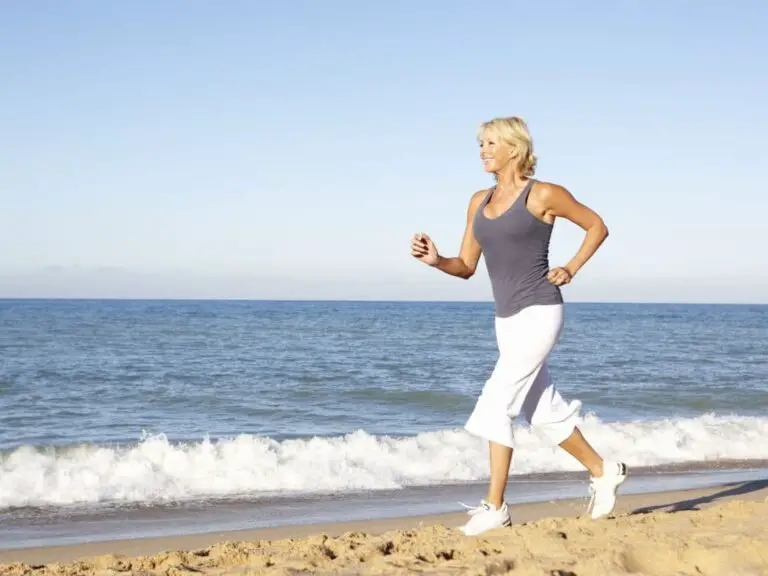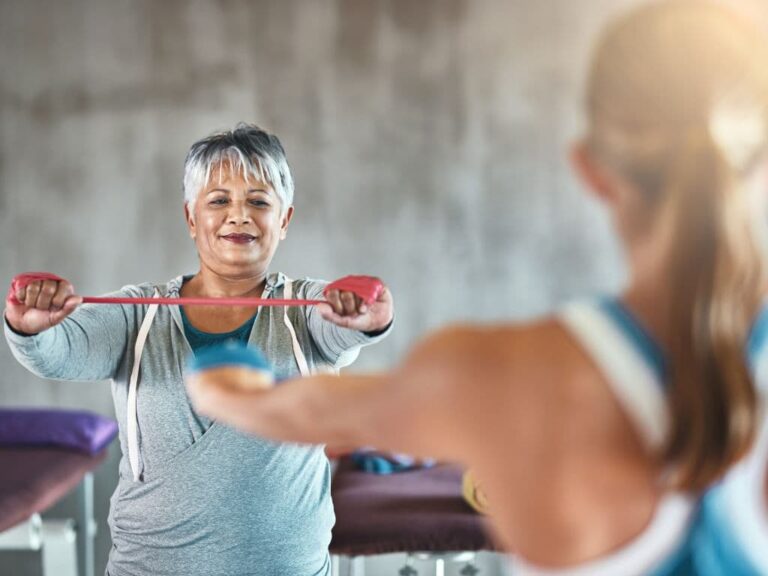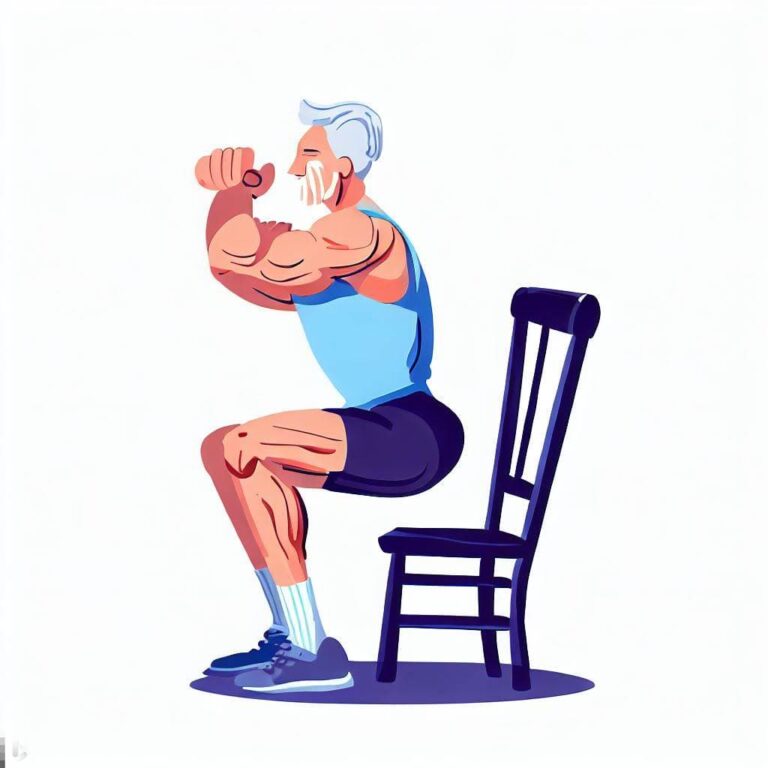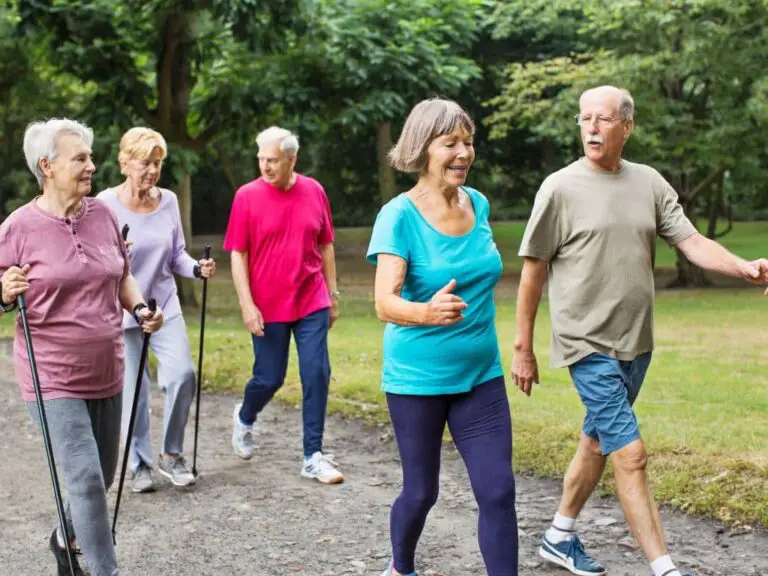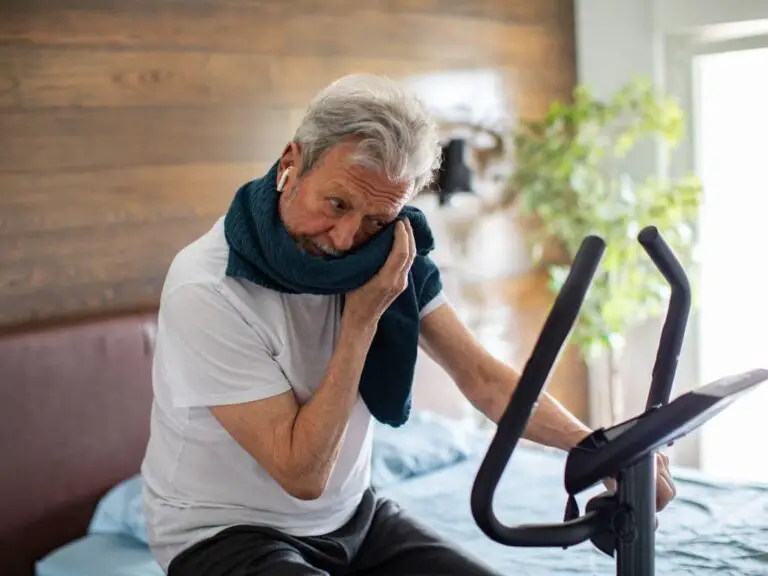Can a 70 Year Old Get in Shape?
Yes, a 70-year-old can get in shape. Regular exercise, including low-impact cardio, strength training, flexibility, and balance exercises, can significantly improve health and fitness in seniors. Proper nutrition and weight management also contribute to physical well-being. Despite potential barriers, seniors can overcome them with a slow start, doctor guidance, and consistency. It’s essential to tailor workouts to individual needs and abilities.
Getting in shape and staying active provides immense benefits for seniors in their 70s. With some determination and smart exercise choices, people in their 8th decade of life can absolutely achieve better health and fitness.

Can a 70 Year-Old Woman Get in Shape?
Yes, a 70-year-old woman can definitely get in shape. Age is not a barrier to starting an exercise routine and achieving better health and fitness.
For a 70-year-old woman, the key to getting in shape is to start slowly and choose suitable activities. It is imperative to consult a doctor before significantly increasing physical activity. Initially, she can start with 10-15 minutes of exercise at a time before gradually increasing the duration.
Low-impact cardio exercises such as walking, swimming, water aerobics, and cycling are excellent options. Light strength training, flexibility exercises, and balance training are also beneficial. For strength training, using lighter weights (1-3 lbs) and doing higher repetitions can help preserve muscle mass without causing undue stress on the joints.
Flexibility can be improved by stretching all major muscle groups after aerobic activity, and by practicing yoga, Pilates, or tai chi. These exercises also help improve balance, which is especially important for preventing falls in older adults.
Proper nutrition and weight management also play a crucial role in getting in shape at 70. A diet rich in fruits, vegetables, lean proteins, and whole grains, along with adequate hydration, can support active aging and fitness. Calcium and vitamin D supplements can support bone health, but a doctor or nutritionist should be consulted for personalized advice.
What Are the Benefits of Exercise for Seniors?
Regular exercise provides tremendous advantages for seniors’ health and longevity. Staying active can help maintain bone density, muscle mass, joint health, and cardiovascular fitness.
Improved Longevity
Studies show that consistent physical activity can increase life expectancy in seniors. Exercise helps strengthen the heart and lungs, which enables people to live longer, healthier lives.
Bone Health
Weight-bearing and resistance exercises can improve bone mineral density. This makes bones stronger and helps prevent conditions like osteoporosis.
Muscle Mass
Strength training is key for preserving muscle mass as we age. Building muscle keeps the body strong and able to complete day-to-day tasks with ease.
Joint Health
Low-impact cardio and stretching improves joint flexibility and range of motion. This alleviates joint stiffness and reduces pain.
Cardiovascular Health
Aerobic activity gets the heart pumping and blood flowing. Regular exercise lowers blood pressure and cholesterol for optimal cardiovascular fitness.
How Can a 70 Year Old Get Started With Exercise?
Beginning an exercise routine after 70 may seem daunting at first. But starting slowly and choosing suitable activities makes getting in shape manageable. Follow these tips:
- Consult your doctor before significantly increasing physical activity
- Start with 10-15 minutes of exercise at a time before building up
- Focus on low-impact cardio, light strength training, flexibility, and balance
- Walking, swimming, water aerobics, and cycling are excellent low-impact options
- Use lighter weights (1-3 lbs) and higher reps for strength training
- Stretch all major muscle groups after aerobic activity
- Try yoga, Pilates, or tai chi for flexibility and balance
- Exercise every other day to allow rest and recovery
With patience and consistency, an exercise habit is sustainable in your 70s.
What Are Some Safe and Effective Exercises for Seniors?
Seniors should choose exercises that minimally stress the joints while providing cardiovascular and strength benefits. Here are some great options:
Cardio:
- Walking
- Stationary cycling or recumbent bike
- Low-impact aerobics
- Swimming
- Water aerobics
Strength Training:
- Wall push-ups
- Arm curls with light weights
- Leg extensions
- Calf raises
- Bodyweight squats
Flexibility:
- Shoulder and neck rolls
- Hamstring stretches
- Calf stretches
- Yoga or Pilates
Balance:
- Tai chi
- Standing on one leg
- Heel-to-toe walking
Focus on proper form over speed or weight amount. Move through exercises slowly and in control. Prioritize non-weight bearing and low-impact activities as much as possible.
How Can Nutrition and Weight Management Contribute to Getting in Shape at 70?
Along with exercise, nutrition and weight management promote healthy aging and fitness. Follow these diet tips:
- Hydrate sufficiently – drink at least 64 oz of water per day
- Eat ample fruits and vegetables – aim for 4-5 servings daily
- Include lean protein like poultry, fish, beans, eggs and nuts
- Choose whole grains like oats, brown rice, and quinoa
- Limit sugar, sodium, saturated fat, processed foods, and refined carbs
- Take calcium and vitamin D supplements to support bone health
- Consult a nutritionist or doctor for help creating a diet plan
Maintaining a healthy weight also ensures energy for exercise and movement. Speak to your doctor to determine a target weight range and safe rate of loss if desired.
How Can Seniors Stay Motivated to Exercise?
Establishing regular exercise habits in your 70s may take some extra motivation. Try these suggestions:
- Find an accountability partner or group to exercise with
- Track progress with a fitness journal or app
- Set specific yet reasonable goals like cardio 3x a week
- Focus on activities you enjoy – it won’t feel like work
- Try a new activity regularly to keep it interesting
- Vary your workouts – don’t get stuck in a rut
- Schedule exercise sessions in your calendar
- Remind yourself of all the benefits you’re getting
- Reward milestones with a treat or fun outing
Staying positive, setting goals, tracking progress, and finding accountability will help you stay motivated for the long-term.
What Are Some Common Barriers to Exercise in Your 70s?
Seniors can face obstacles when starting or maintaining exercise habits, including:
- Physical limitations – joint pain, low mobility, balance issues
- Fear of injury or falling – being overly cautious
- Lack of confidence – doubting ability to be active
- Low energy or stamina – needing frequent rest
- Illness or chronic conditions – preventing certain activities
- Lack of motivation – difficulty establishing routines
- Lack of transportation – trouble getting to gym or class
- Cost of gym memberships – fixed income constraints
How Can Seniors Overcome Common Barriers to Exercise?
With some creativity and determination, the barriers to senior fitness can be overcome:
- Choose low-impact activities that work within limitations
- Seek doctor guidance about safe exercises
- Start slowly and focus on proper form to prevent injury
- Build confidence gradually with easier successes first
- Schedule frequent rest periods and hydration breaks
- Modify intensity based on health conditions
- Find an accountability partner for motivation
- Seek activities you enjoy – it won’t feel like work
- Do exercises at home if unable to go to gym
- Check with insurance – they may cover fitness costs
- Take advantage of free community classes and events
With the right approach and mindset, any obstacle or limitation can be worked around. The most important thing is to simply start where you’re at, listen to your body, and do what you can.
Conclusion
There are certainly challenges to exercising in your 70s, but the multitude of physical and mental benefits make it well worth the effort. Start slowly, focus on safety, choose suitable activities, and stay motivated.
With determination and consistency, anyone at 70 years old, or older, can achieve better health and fitness through regular exercise. The key is tailoring your workouts to your unique needs and abilities. If getting in shape was possible at a younger age, it most certainly can be done again later in life with the right strategy.
Frequently Asked Questions
-
Can a 70 year old get in shape?
You can get fit no matter your age. Fitness can be improved at any age. These stories are quite dramatic. “Even people as old as 100 can still build muscle strength,
-
How many steps should a 70 year old walk each day?
Normal data suggests that healthy seniors average between 2,000 and 9,000 steps per day, while special populations go on average from 1,200 to 8,800 steps per day.
-
How far should an 82 year old walk?
According to a study in The International Journal of Behavioral Nutrition and Physical Activity, the daily step count for an average older person is between 2,000 and 9,000.
-
How much should a 70 year old exercise?
Adults 65 years and over need to exercise at least 150 minutes per week. This could be 30 minutes each day or 5 days a weeks of moderate activity like walking. They also need to do 75 minutes per week of intense activity like running, jogging or hiking. A minimum of 2 days per week should be spent engaging in activities that help strengthen the muscles.
-
What is the best exercise for a 60 year old woman?
Strength training is the best way to fight sarcopenia, or age-related muscle loss. This helps to maintain and grow lean muscles. Your body will burn more calories when you have lean muscles, which can help with fat loss and sustainable maintenance.
-
How often should a 70 year old exercise?
Adults 65 years and over need to exercise at least 150 minutes per week. This could be 30 minutes each day or 5 days a weeks of moderate activity like walking. They also need to do 75 minutes per week of intense activity like running, jogging or hiking. A minimum of 2 days per week should be spent engaging in activities that help strengthen the muscles.
-
Can a 75 year old build muscle?
Seniors can still bulk up on muscle by pressing iron. As we age, our muscle mass drops at astonishing rates. Researchers found that lifting weights can help people over 50 not only preserve but even increase muscle mass.
-
How fast should a 75 year old walk?
It’s easy to start walking briskly for 30 minutes five days per week. Brisk walking is 100 steps per hour. You can also walk 3 miles an hour.
-
What exercise should a 70 year old woman do?
Aerobic exercise is important for seniors. They need to get at least 2 hours of exercise each week, such as brisk walking. This is about 30 minutes most days. Walking, dancing and tennis are endurance exercises that improve your energy, breathing and heart rate. Stretching and yoga are great ways to stay flexible.
-
Can you regain muscle tone after 60?
Take note, retirees! 2017 could be your year to start building muscle. Research has repeatedly shown that weight training can help women and men in their 60s to grow muscle as strong and large as those who are 40 years old.


